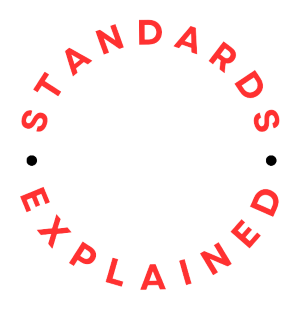ISO 41001:2018 Facility management — Management systems — Requirements and guidance for use specifies the requirements for a facility management (FM) system when an organization:
- needs to demonstrate effective and efficient delivery of FM that supports the objectives of the demand organization (i.e. client, facility owner or operator);
- aims to consistently meet the needs of interested parties and applicable requirements;
- aims to be sustainable in a globally competitive environment.
Who should use the standard?
The requirements specified in ISO 41001 are non-sector specific and intended to be applicable to all organizations, or parts thereof, whether public or private sector, and regardless of the type, size and nature of the organization or geographical location.
Note that a revision of this standard is under development and is likely to be published in 2025.
What does it cover?
| Introduction |
| 1 Scope |
| 2 Normative references |
| 3 Terms and definitions |
| 4 Context of the organization |
| 4.1 Understanding the organization and its context |
| 4.2 Understanding the needs and expectations of interested parties |
| 4.3 Determining the scope of the FM system |
| 4.4 FM system |
| 5 Leadership |
| 5.1 Leadership and commitment |
| 5.2 Policy |
| 5.3 Organizational roles, responsibilities and authorities |
| 6 Planning |
| 6.1 Actions to address risks and opportunities |
| 6.2 FM objectives and planning to achieve them |
| 7 Support |
| 7.1 Resources |
| 7.2 Competence |
| 7.3 Awareness |
| 7.4 Communication |
| 7.5 Documented information |
| 7.6 Organizational knowledge |
| 8 Operation |
| 8.1 Operational planning and control |
| 8.2 Coordination with interested parties |
| 8.3 Integration of services |
| 9 Performance evaluation |
| 9.1 Monitoring, measurement, analysis and evaluation |
| 9.2 Internal audit |
| 9.3 Management review |
| 10 Improvement |
| 10.1 Nonconformity and corrective action |
| 10.2 Continual improvement |
| 10.3 Preventive actions |
| Annex A Guidance on the use of this document |
| A.1 Scope |
| A.2 Normative references |
| A.3 Terms and definitions |
| A.4 Context of the organization |
| A.5 Leadership |
| A.6 Planning |
| A.7 Support |
| A.8 Operation |
| A.9 Performance evaluation |
| A.10 Improvement |
Implementing ISO 41001
Implementing a facility management system (FMS) in conformity with ISO 41001 involves a structured approach to ensure that the organization meets the requirements for facility management.
1. Leadership and Commitment
- Establish leadership support for the implementation of an FMS in conformity with ISO 41001.
- Top management should demonstrate its commitment to a fully operational FMS by providing sufficient resources for this purpose.
2. Assemble a Project Team
Form a cross-functional team responsible for implementing the FMS. Include members from various departments, such as facility management, purchasing and supply and quality, as well as key stakeholders.
3. Gap Analysis
- Conduct a comprehensive gap analysis to assess current facility management practices against the requirements of ISO 41001.
- Identify areas where the organization needs to improve to meet the standard.
4. Set Objectives and Scope
- Define the objectives for ISO 41001 implementation and establish the scope of the FMS.
- Determine the boundaries, responsibilities, and facilities covered by the FMS.
5. Strategy & Policy Development
Develop a facility management strategy and facility management policy aligned with ISO 41001. Both should affirm the organization’s commitment to complying with the standard’s requirements.
6. Risk Assessment
- Identify and assess risks related to facility management activities.
- Develop risk response and mitigation strategies and incorporate them into the FMS.
7. Documentation
Develop the necessary documentation, including a manual, procedures, work instructions, and forms, to support the FMS. Ensure that these documents are accessible and understood by affected personnel.
8. Resource Allocation
Allocate the necessary resources, including personnel, time, and budget, to implement and maintain the FMS effectively.
9. Training & Competence Development
Provide training to employees to ensure they are competent in their roles within the FMS. This includes training on ISO 41001 requirements and how to use the FMS effectively.
10. Communication & Awareness
Establish communication channels to inform employees and other stakeholders about implementation of the FMS. Ensure that all relevant parties are aware of their roles and responsibilities.
11. Performance Monitoring & Measurement
- Define key performance indicators (KPIs) and measurement criteria to evaluate the effectiveness of the FMS.
- Implement a system for collecting and analysing data.
12. Implementation of Processes & Controls
Implement the necessary facility management processes and controls outlined in ISO 41001. These can include processes related to asset management, maintenance, space utilization, and sustainability.
13. Internal Audits
- Conduct internal audits to assess compliance with ISO 41001 requirements and the effectiveness of the FMS.
- Address any nonconformities and continually improve the FMS.
14. Management Review
- Hold periodic management review meetings to evaluate the performance of the FMS and make necessary improvements.
- Top management should use these reviews to ensure the FMS aligns with organizational objectives.
15. Corrective & Preventive Actions
Implement corrective and preventive actions to address identified issues, nonconformities, and opportunities for improvement. Ensure that actions are tracked and monitored.
16. Certification
- If the organization is seeking ISO 41001 certification, engage with a certification body to assess the FMS. This must be somebody who is able to demonstrate conformity with ISO 19011:2018 Guidelines for auditing management systems.
- Prepare for the certification audit by ensuring compliance with all ISO 41001 requirements. Allow enough time to prepare.
17. Continual Improvement
- Maintain a culture of continual improvement by consistently reviewing and enhancing the FMS.
- Stay updated on changes to ISO 41001 and adapt the system accordingly.
18. External Communication
Communicate the organization’s ISO 41001 certification (if obtained) to external stakeholders, such as clients, customers, and partners.
19. Maintain Conformity
Continually monitor and ensure ongoing conformity with ISO 41001 requirements as part of the routine facility management practices.
20. Documentation and Record Keeping
Maintain accurate and up-to-date records of FMS activities, audits, reviews, and actions taken for compliance and improvement.
Further words of advice…
By following these steps, the organization can successfully implement an FMS in conformity with ISO 41001, which will help improve the effectiveness and efficiency of facility management processes while aligning with international best practices.
ISO 41001 can be purchased through the ISO.org website.














Comments (0)